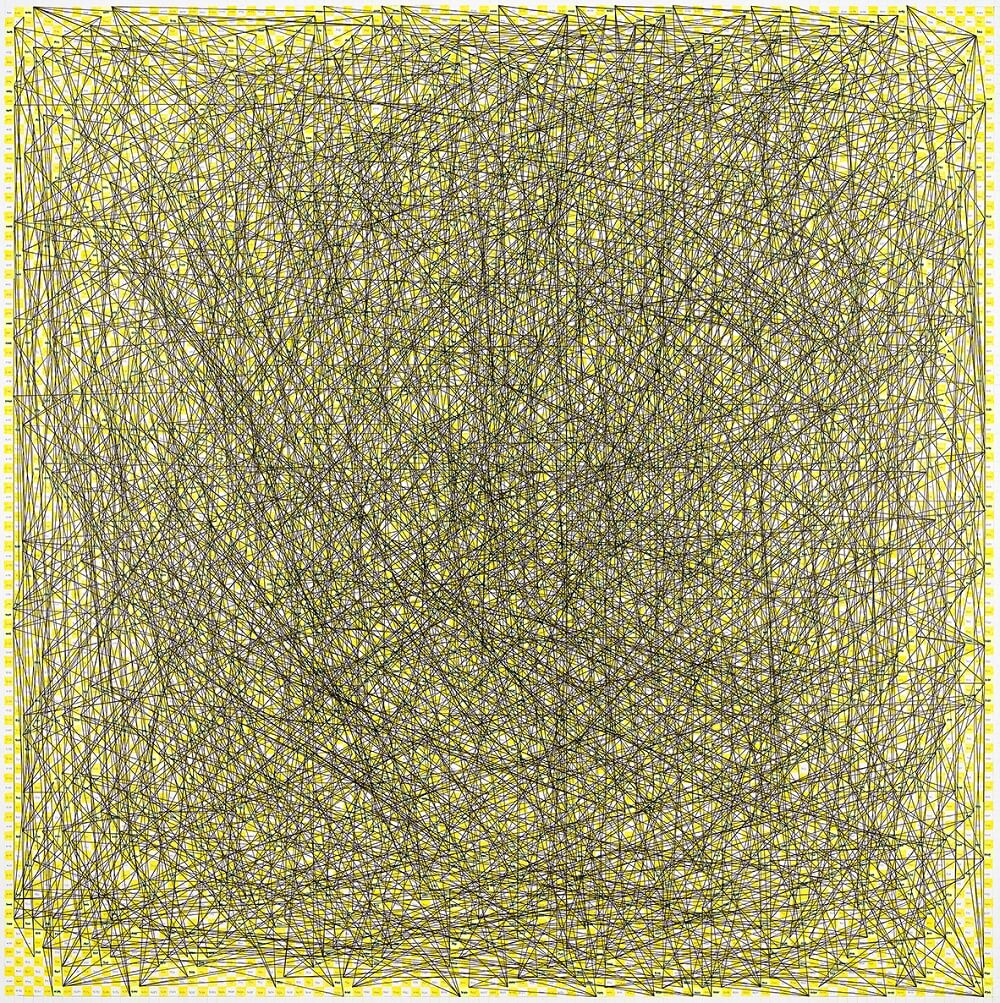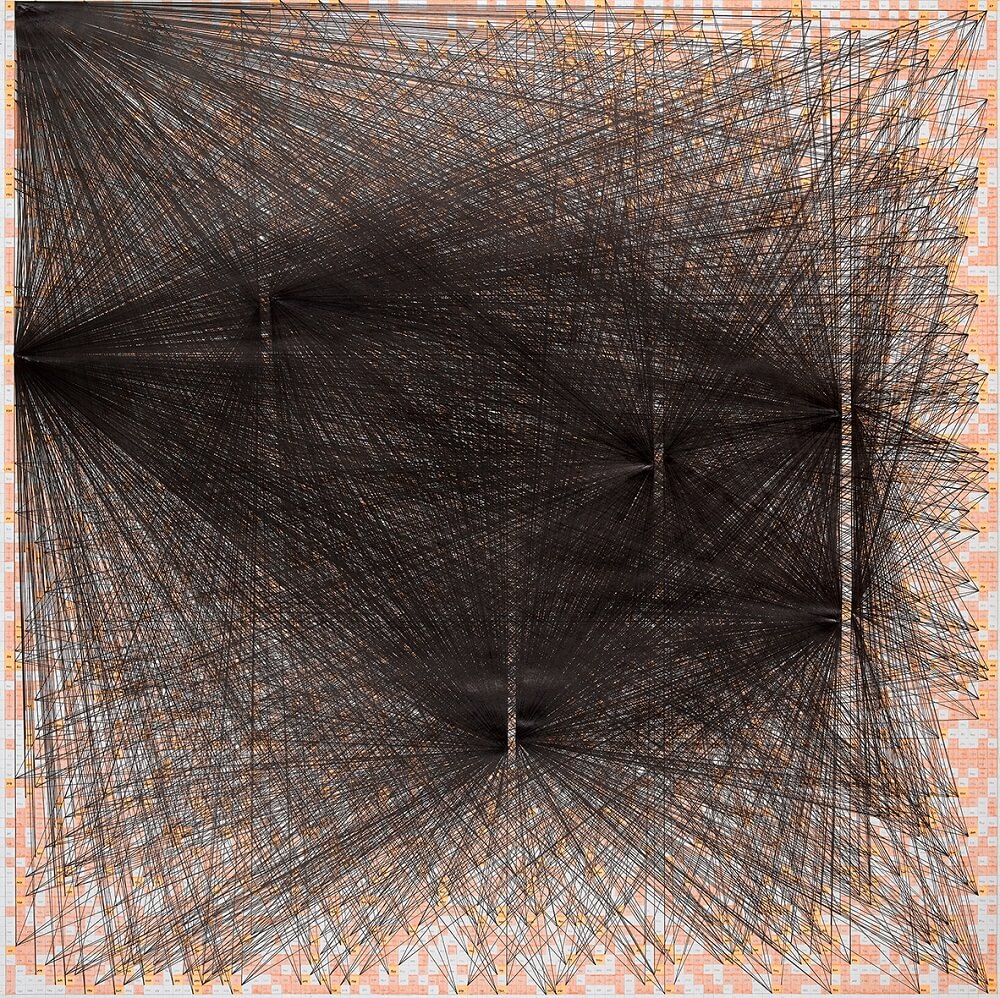Lucía Simón Medina
Lucía Simón Medina. Looking for All the Possibilities, 2021
Drawing made by hand
102 x 102 cm
Pencil and ink on paper
Framed
WORK DESCRIPTION
WORK DESCRIPTION
In mathematics, prime numbers are natural numbers greater than 1 that are divisible only by themselves and one, and because of their randomness, they are unpredictable. On the contrary, composite numbers are natural numbers that have some natural divisor aside from themselves and 1 and therefore, can be factorized. Factoring a number means simplifying its expression in terms of “fundamental blocks”, which are called factors. For example, factoring a composite number means writing it as a product of prime numbers. Mathematicians have devised a way to link the difficult problem of factoring with the codes that protect the finances of the entire world on the Internet, because of the incredibly long times this requires. Factoring a number of more than one hundred digits means having to verify more numbers than the number of particles existing in the observable universe.
“Looking for all the possibilities” is a 10200 square centimetre diagram that describes all even numbers from 2 to 10200 in their fundamental blocks: the prime numbers. Reducing the definitions to their minimum expression does not bring clarity, but confusion, as the surface turns black after drawing all the possibilities. This diagram is a possible image of the cryptographic phenomenon, which is usually presented inside a black box. The manual work of drawing symbolizes the computing power and time consumed by this type of operation.
12.507 €






